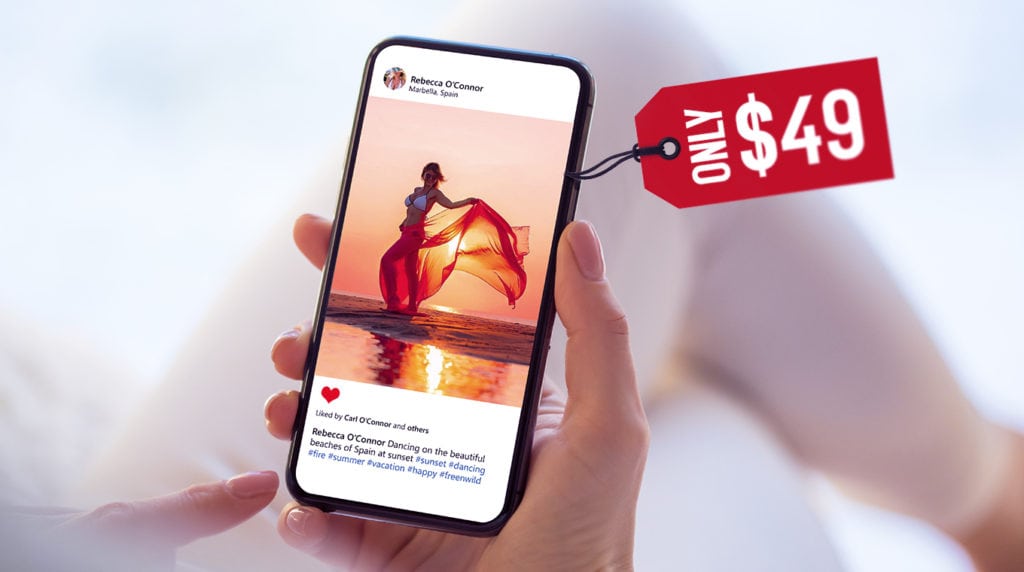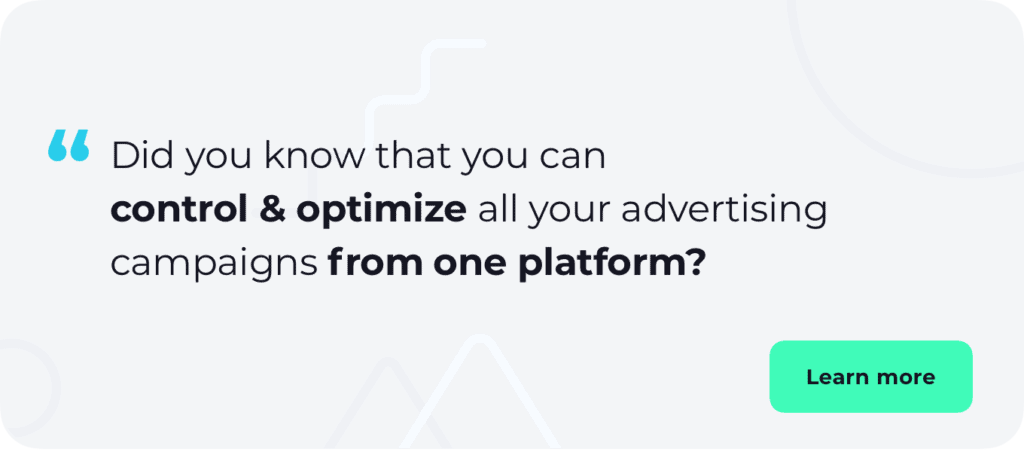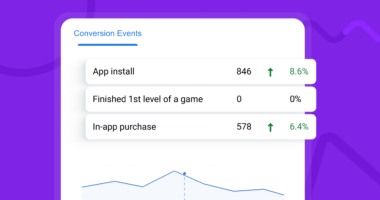Oh, 2020, what a heartless hag you’ve been. You’ve turned the easy copy-and-paste writing about the digital trends into the ultimate guessing game.
I feel bad for all those articles written in the early days of 2020. They were full of promises that salvation by technology is near. They all listed the same usual suspects:
- AI in marketing
- voice searches
- humanlike chatbots
They were all supposed to be a promise of a marketer’s paradise.
You poor, unimaginative piles of wasted web space written by hands that have never touched a professional-grade disinfectant yet.
I’m not going to pretend that I can see the future. But I’m not into the guessing games either. What I’m proposing here is the basis for a debate about what comes to digital marketing in the COVID, post-COVID, or business-as-usual era.
It’s not going to be a traditional, Oxford-style debate, nor a Skype one. I will simply write down the trends that will most likely matter the most in the coming year and you can debate with yourself how right or wrong am I. Often discussing someone else’s wrong prediction can lead to a good one.

I will try to omit generalizations, such as ‘AI in marketing is going to be a thing’. Yeah, probably, to some level it already is, but how does it influence my day-to-day work as a marketer? What should I do differently?
CMO’s that often write these kinds of posts tend to get overhyped towards new tech. Maybe the picture they see is simply too big.
Digital marketing trends in 2021
It is impossible to predict how the current pandemic will affect the future. For some, it’s a game changer. For others, like YouTube’s CGP Grey, everything will go back to pretty much normal in the long run.
But 2021 isn’t the long run. It’s a medium run at best that will surely be affected by the pandemic somehow.
Outside the influence of the coronavirus there are still other many-year-long trends that emerge and may affect the digital marketing landscape.
To sum up, it will be a very interesting year.
1. Shoppable posts
I honestly don’t see a more important trend in commerce in the last couple of years than reducing the number of obstacles between a customer and a product. Every facilitation of product delivery, payment methods, or advertising has made a merchant’s life easier.
Think that not so long ago you would have to make a bank transfer to a shop to pay for a product. Now you can use credit cards whose credentials are stored in a web browser, or go with one of the many payment providers, or pay with virtual cards and even virtual currency.
At the same time, delivery methods are faster and more convenient.
The most recent advancement to the shopping experience are shoppable posts. Introduced by Instagram, followed by YouTube, these posts or videos allow its users to add products they see in social media straight to the checkout. No need for visiting a dedicated website and searching for products there.

You see clothes you like on a post. You click on them, buy them with an attached payment method, and you are done. Shopping couldn’t get any easier.
The covid angle
To say that ecommerce was popular during the lockdown is to say nothing at all. For many, online purchases were the only way of getting even essential goods. For store owners, rapidly deprived of sources of income, it was a drip of money that for some meant a difference between surviving and bankruptcy.
People moved their shopping online and the pandemic only increased the rate of it. This suggests that social commerce will become even more important.
The marketing message
Shoppable posts put bigger emphasis on a visual side of your products but also on the context, i.e. who’s promoting it. A good influencer will sell almost everything, but it doesn’t mean that you should bow to every influencer’s whim. The reason is explained in the second point of this list.
Under this general term I’ve put every change that, in my opinion, comes to traditional social marketing. By that I mean business practices that rely on influencers to advertise your product on established social networks and, at the same time, the use of paid advertisement on these platforms.
Big influencers will soon lose their grip on their followers by, simply speaking, credibility issues. When influencers start to behave like an ad agency, people will stop distinguishing their content from normal paid posts and will turn away.
Moreover, trendsetters will likely leave social giants like Facebook, because it has become a domain of parents and weird groups, not the place for undisturbed expression.
Will it be TikTok? Or some other platform you haven’t even heard of? Who knows, that’s a billion-dollar question.
What I can tell you is that the word of the 2021 in digital marketing will be ‘micro’. Micro influencers with small but still relevant reach can maintain closer relationships with their followers and may be a better option for a merchant than big Instagram divas.
Smaller social networks, or small groups in big networks will have the same advantages. Advertisements will be more local, more targeted, closer to the people.
The covid angle
The pandemic forced many parts of human activity to move online. Businesses that weren’t even considering online presence, such as small cafes or barber shops, quickly opened to online audiences. Likewise, non-business activity has also forcefully moved online, be that theater groups, musicians, bodybuilders, bird-watchers, and so on.
The marketing message
Are you selling fishing equipment? Don’t go for the fishing celebrities, find a guy that wrote 100 posts about how to catch a bass and pull him into your campaign. Ask this guy to point another guy with similar input and create a whole grassroot net of micro influencers.
3. Subscription-based everything
Remember Edward Norton’s character in Fight Club monologuing about single-serving food and single-serving friends? Yeah, today’s Narrator would have probably been subscribed to one of those food subscription boxes.
Subscription for friendship? That’s a billion-dollar idea!
Anyway, a product often becomes a service nowadays, and a product’s price – monthly fee. Only packaging remains single-served.
Do the intellectual exercise and count how many services you are subscribed to. Below 5, really? Did you know you can have boxes with wine delivered straight to your door on a monthly basis? That will help you go over the number 5.
Jokes aside, there are reasons why companies prefer long-term paying customers. Company’s finances are more predictable, and their customers tied closely to the company.
On the other hand, the customer gets comfort and the illusion of choice. The thought of having access to over 4,000 movies is pleasant enough to justify a recurring fee, even if all most users watch these days are seasons 2 to 5 of ‘Friends’.
The covid angle
Subscribers are a lifesaver during the pandemic. Gyms all over the world, although closed during the lockdown, were doing everything they could to keep their members paying. Many members cancelled but some decided to stay, enjoyed the online exercise courses and waited for the things to get back to normal.
This much smaller but still noteworthy influx of money helped many businesses to stay afloat. The pandemic will only increase the rate of adopting the subscription model by many companies.
The marketing message
Services are advertised differently than products. Instead of instant gratifications, you emphasize comfort, choice, and security. On top of that, you have to focus on the long-term relationship with a customer.
Long gone are days when marketers were employing every trick known to social psychologists to force customers to buy their products and forget about their existence the minute a payment was processed. I’m not even talking about building brand awareness and loyalty. With a subscription-based economy, a safe assumption is that a customer considers unsubscribing from a service at least once a month.
That’s a complete rework of a standard customer funnel. Customer retention and nurturing is something that you should do in parallel with attracting new customers. Also, never burn any bridges with those that have left you: create a pleasant unsubscribe flow and run campaigns for lost customers.
It will pay off whenever trends change, or your main competitor will get into trouble.
4. New entertainment
Look, people like expensive stuff. Very often just because it’s expensive. But how can you maintain a luxury-goods store in a time of a pandemic-caused recession?
You sell luxury goods that were pre-owned, refurbished, pre-loved. You can give the feel of having an expensive item without the hefty price tag.
Similarly, how can you advertise concerts or sports events with social distancing or even a lockdown in place?
You advertise tickets for online concerts or in-venue ones that are transmitted over the Internet. The good news is that tickets for such an event will not run out.
The new normal will embrace the neatly named “phygital” experience, i.e. the merger of offline and online worlds.
The covid angle
The obstacles in getting traditional entertainment will be restrictions in travel, closed cinemas, recession, lockdowns, and social distancing rules. But new forms of entertainment may emerge: local traveling, cinemas showing more local or older productions instead of Hollywood blockbusters which premiers keep getting pushed back, various forms of local collaborations.
The marketing message
People don’t want entertainment, they need it. Take your business and think about how to adjust it for the coming times. Don’t focus only on problems but explore new opportunities as well. The pandemic didn’t happen in 2003 or in 2012, it happened in 2020, where the Internet is developed to the point where most of the human activity can occur in front of a computer screen.
Every offline event can have an online component.
5. Depersonalization
That’s awkward, but 11 months ago (which seems like 50 years in the times of the pandemic) I’ve published an article about the future of advertising, and in it I’ve specifically stated that personalization of the marketing message will be one of the leading trends of the coming decade.
And if you think of it, it sounds very intuitive. People see ads for stuff they actually want to buy. That’s how it’s supposed to work, right?
But what if the opposite would also be true?
What if non-targeted advertising can bring significant, or even bigger profits than those that are carefully thought through and aimed at specific groups?
Recently, a Dutch newspaper has run an experiment and it turned out that profits from non-targeted advertising were higher than from targeted ones.
I think it’s a case of regular online dating vs Tinder. The first ones force you to fill up questionnaires designed to help you find the best match. But sometimes it feels more like attending a job interview than finding the love of your life.
Tinder lets you hook up with a nice girl that’s into stuff you never knew existed. She might not like the same movies and have a different stance on various political issues.
But who cares when you are having fun?
Targeted ads close a visitor in a bubble of similar stuff. They might have already bought the thing they once searched for and you still waste money on pushing it.
The covid angle
The global move to the online presence will have various implications. People will not only go online to find the one thing they want to buy. When spending a significant portion of life online, they may be opened to new stimuli.
On top of that, the rising concerns connected with targeted advertising may mean that there will be some restrictions coming. Google has already announced that they plan to phase out 3rd party cookies which are used by advertisers to track and target visitors by 2022.
The marketing message
Consider your case and run an A/B test with more and less targeted ads and see if you observe any changes in ad performance.
6. Tracking, reinvented
Following the global focus on privacy, there is a need for new ad tracking platforms that both fulfill major platform requirements (like Facebook) and are ready for any technological challenges that may come.
These challenges include the aforementioned ending support for 3rd party cookies in Chrome, the overall shift away from redirect tracking and the need for deeper integrations with traffic sources.
Targeted ads or not, ad campaigns still have to be tracked to balance the cost vs profit ratio and automate as many optimization tasks as possible. Advertising without a tracker is throwing money through a window with a hope that someone will throw even more money back.
The covid angle
This is yet another point connected with many human activities being moved online. The more time people spend at the computer, the bigger your focus on customer’s lifetime value, automation and optimization should be.
The marketing message
Voluum is a tracker that has always been recognized as a platform that confronts and prepares for the future, not merely adapts to it. With redirectless tracking and state-of-the-art API connections with major traffic sources, it is ready for any ad campaign you want to run.

7. Emerging markets
At one point in time this year, 4 billion people were under some kind of a lockdown order. That’s a truly global phenomenon of unprecedented proportion. Event World War 2 didn’t affect as many people.
This gives all of us a chance to think how we are mutually entwined. For merchants, that was the moment to think about new audiences.
So many people were stuck in their homes needing similar things. Did you think that only New Yorkers need food, toilet paper and PPE? What about Nairobians? We are all in the same boat.
The covid angle
There isn’t a specific angle. The COVID situation was simply a signal that something like a global audience truly exists and it will only grow bigger.
The marketing message
You have a chance of tapping into new markets. With global shipping services and translations that you can outsource, there’s little that can stop you from reaching them.
Remember, do not make a false assumption that new joiners will follow the same path of the Internet discovery as you did. They won’t be wowed by the ten-year-old tech. Their experience will be different than yours.

What we can learn from new markets in Asia is that so-called super-apps often emerge. Super-apps are apps that serve many different purposes (for example, ordering food or getting a cab). Latecomers don’t have an app for every task, they often have one for all.
This is just an example of how such markets adapt to the well-developed Internet. Think about what your experience would be like if you have just found out that the Internet exists.
8. Relationships matter
Did you buy something online during the lockdown only because you wanted to help out a business you know? Did you order food just to support your favorite restaurant, even when you had something to eat at home?
Big brands would kill for such loyalty.
Instead of killing, they are more likely to choose investing in more honest relationships with customers.
Brands were always looking for new ways to exist in their customers’ eyes not only as a product manufacturer, but also as an important entity.
They wanted to be experts in many fields, they tried to be politically involved, now the time has come for them to simply be your friend.
The pandemic of distrust towards the mainstream information hasn’t left them much choice. The only way to get your trust will be to get close with you.
When Naomi Klein was writing her most famous book, “No logo”, she depicted brands as almost godlike figures. But even gods are not immune to pandemic.
The covid angle
Brands that are to survive are not always the best prepared, most essential with most protected supply chains. They often survive because they are deemed essential. They live because customers want them to live. They will think about purchasing your product as their duty.
The marketing message
Focus on emotions, not only on raw data. Don’t send them a message like “Try to be cool as our brand is”, but rather “Let’s be cool together”.
- Cadbury doesn’t even show chocolate in this commercial, only a heartwarming message.
- There are no professional athletes in this Nike commercial.
Big brands have adapted quickly to this trend because they have talented marketing teams. The sooner they realize that this is not a short trend that they can cash on, the better for them.
Right now, every COVID-related marketing material starts to look the same, and because of that, they look disingenuous.
Relationships take time and effort, but they will pay off during subsequent lockdowns, pandemics and anything else that reality will throw at us.

The debate about digital marketing trends begins
Do you agree with all the points I made above? Or do you think that the marketing world will move in another direction?
This is the debate I wanted for all of us to have. We have to look past the hopes and dreams of tech-focused marketing leads and try to make marketing what it always should be: a tool that responds to people’s actual needs.
And as for the coming year, we all beg you, to be a boring, uneventful year. The world may need a revolution, but we all deserve to catch a breath. Try not to be like seemingly every other year before you: an excerpt from a long-forgotten dystopian novel.
Let all the marketing trends develop nicely, let people enjoy the little things, and allow them to purchase those things online. We don’t crave for AI changing the marketing landscape, we just want FedEx to operate smoothly.






One comment
This article is very informative, updated and transparent.
What a useful information provided by this blog! It’s remarkable. Thanks for helping me out